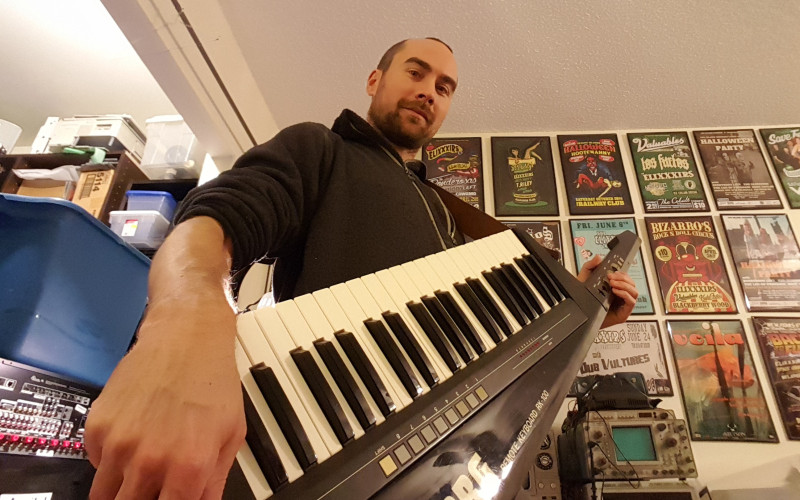On a dreary night in November, [Smecher] collected the instruments of electronic life around him to infuse a musical spark into FrankenKorg — a resurrected keytar.
This hack is a “re-braining” of a RK-100 Korg Keytar, replacing the original circuits with an ATMega32 — the original functionality and appearance are preserved allowing any restored version of the original boards to be seamlessly re-integrated. In light of that, the original boards were ditched after a brief investigation, and a haphazard building process on a protoboard began. Three LS138 3-8 demuxers that accompany the ATMega handle scanning the keys since there weren’t enough pins on the ATMega alone for all the Korg’s features. Check out [Smecher]’s breakdown of his process in the video after the break!
The next phase is to enlarge his entry to the Moog circuit bending contest — a trio of small speakers on a CD disk drive motor — to three larger speakers mounted on a washing machine drum powered by the played musical frequencies for a unique phasing effect. That has understandable challenges, so for now at least, the FrankenKorg is once again a functional MIDI keytar.
Other modern keytars include this bass, and one hacked together from a scanner!
















” In light of that, the original boards were ditched after a brief investigation, ”
Where are the commenters that scream
“You threw out the guts and replaced them with a modern circuit!” “Heresy!”
in all the other antique radio refit articles?
I hope you don’t actually miss those people here — I sure don’t. In recent years I *always* address preservation when I work with antiques because it comes up so often, but there’s always someone willing to barge in and complain without reading anyway.
As I noted in the video, the original boards have been kept and there have been no modifications made aside from the board replacement. The original connectors work with the new board. The boards go in the carrying case in an anti-static bag. Personally, I have no interest in fixing them.
Well, I took the word “ditched” almost literally…
Thanks for keeping the boards. While something from the ’70’s or ’80’s may not be considered “antique” in today’s world, there is technology from that era that is not easily duplicated, and will be even harder to “resurrect” 20-30 years from now.
Good choice Alec. Whenever I mod or hack on a device (and especially an older one), I make sure to do it in such a way that I can put it back exactly the way it was, or close enough to be unnoticeable. It’s just a personal preference, but I have become aware of the importance of keeping the original circuitry as backup.
That way of I ever sell something on, I can restore it back to the way it was. As a bonus, the historical value of the device is preserved.
Hey, a constructive conversation about preservation on Hackaday! That’s a much-appreciated first. Thanks to you both.
The Roland Axis-1 and Korg RK-100 have to be the best looking Keytars ever built. I wish i didn’t sell me Axis-1 because it would of been easy enough to convert it over to wireless midi with today’s microcontrollers.
bonjour
j’ai un keytar de couleur blanc qui fonctionne très bien j’aimerai lui donner un coup de jeune faire changer les circuits plus moderne j’ai besoins d’aide merci